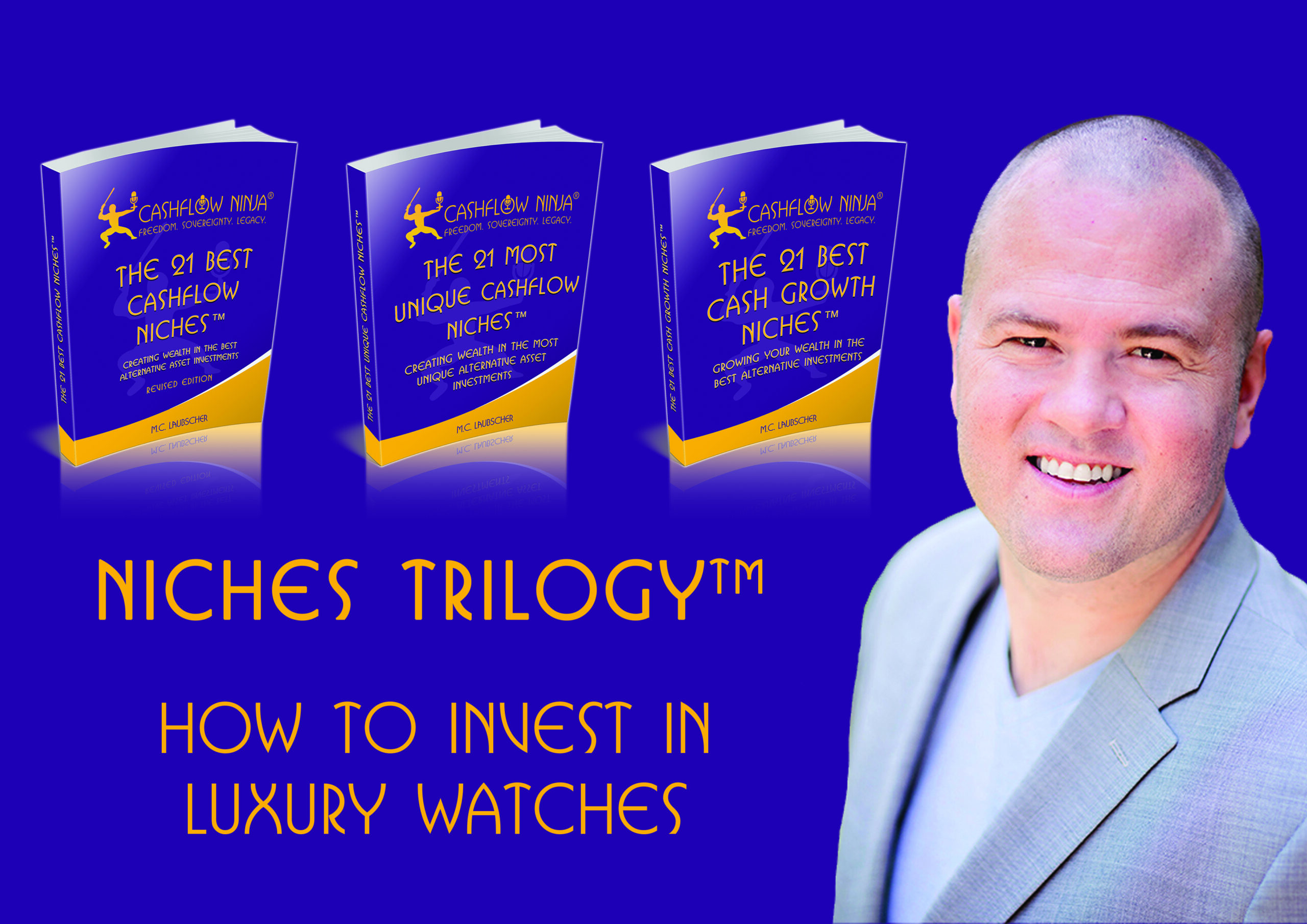
Luxury watches as an investment asset class involve the purchase of high-end, often rare, timepieces with the expectation that their value will appreciate over time, offering potential profitability. Known for more than just their functionality, luxury watches are esteemed for their craftsmanship, design, brand prestige, and, in some cases, historical significance. Qualifying as a luxury watch and being considered for investment involves several characteristics.
Renowned brands typically produce luxury watches with a long history and a reputation for quality and craftsmanship. Prestigious watchmakers such as Rolex, Patek Philippe, Audemars Piguet, Omega, and Cartier are notable examples, with their timepieces frequently sought by investors. These watches are distinguished by their high-quality materials, fine craftsmanship, and meticulous attention to detail. Often hand-assembled, they include intricate mechanical movements and unique design features.
A key aspect of luxury watches is their scarcity and exclusivity. Many are produced in limited quantities, making them rare and exclusive. Limited edition models or watches with a unique history or provenance can be precious. The resale value is also crucial in qualifying a watch as a luxury investment. Timepieces likely to become collectible or maintain a stable demand in the secondary market are often considered good investment pieces. This potential to maintain or increase value over time makes luxury watches a sought-after asset class for investors.
Why Invest in Luxury Watches?
Investing in luxury watches is driven by several factors that make them an appealing asset class. One of the primary reasons for investing in luxury watches is the potential for value appreciation. Certain luxury watches, especially rare or vintage pieces from prestigious brands, have consistently increased value over time, making them lucrative for long-term investment.
Luxury watches are tangible assets, offering an appealing alternative to traditional investments like stocks or bonds. They provide the physical satisfaction of ownership and the pleasure of having a functional and beautiful object that can be enjoyed while it is appreciated. Additionally, investing in luxury watches can diversify an investor’s portfolio. The value of luxury watches often does not correlate directly with traditional financial markets, offering a buffer during market volatility and economic downturns.
Many investors in luxury watches are also enthusiasts or collectors, drawn to the collectability and passion associated with these timepieces. The passion for collecting, coupled with an appreciation for the craftsmanship and history of watches, often complements the financial aspect of the investment. Furthermore, luxury watches are frequently seen as status symbols. Owning rare or exclusive timepieces can confer social and prestige value, adding an extra dimension of appeal to the investment.
Overall, investing in luxury watches combines financial potential with personal enjoyment, making it an attractive option for many investors. The blend of value appreciation, tangible asset ownership, portfolio diversification, and the emotional satisfaction of collecting and owning prestigious items contributes to the allure of luxury watches as an investment asset class.
Luxury Watches Ecosystem
The luxury watch ecosystem is a dynamic and complex network that includes the design, manufacturing, marketing, distribution, and sale of high-end timepieces and the secondary market for pre-owned or vintage watches. This ecosystem comprises various stakeholders, each playing a vital role in creating and circulating luxury watches. At the heart of this ecosystem are renowned watchmakers and brands such as Rolex, Patek Philippe, Audemars Piguet, and Omega. These entities are responsible for designing and manufacturing luxury watches. They are known for their innovation, craftsmanship, and use of high-quality materials, often blending traditional watchmaking techniques with modern technology.
Suppliers and artisans are essential to the ecosystem, providing critical components and materials like movements, dials, cases, and straps. Artisans, including engravers and gem-setters, add detailed and intricate work to luxury watches. The retail and distribution of these watches are handled through authorized dealers and brand boutiques, ensuring authenticity and quality service. The rise of online luxury watch retailers has also broadened the accessibility and reach of high-end timepieces.
A significant part of the luxury watch ecosystem is the secondary market, which includes the trade of pre-owned and vintage watches. This market is facilitated by auction houses, specialized dealers, and online platforms. Collectors and watch enthusiasts are crucial players in this market, driving demand in both the primary and secondary markets. Media and events also play an essential role, with specialized magazines, websites, social media platforms, and trade shows like Baselworld and the Salon International de la Haute Horlogerie (SIHH) focusing on luxury watch news, reviews, trends, and showcasing new releases and innovations.
Post-sale service, including maintenance and repair, is another vital aspect of the ecosystem, often provided by the brands or authorized service centers. Additionally, the verification of authenticity and appraisal of luxury watches, especially in the pre-owned market, is handled by experts and specialized services. Together, these components form the luxury watch ecosystem, catering to the diverse needs and interests of watchmakers, consumers, collectors, and enthusiasts, all united by their passion for the art of horology.
How To Grow Cash
Investing in luxury watches offers a variety of strategies for investors to make money and grow their cash, primarily through the potential appreciation in value of these high-end timepieces. This potential is especially pronounced in rare, collectible watches or from prestigious brands. Luxury watches from renowned brands or those released as limited editions tend to appreciate over time. Vintage pieces, watches with historical significance, or discontinued models, become more valuable as they grow older and rarer, making them attractive investment opportunities.
Investors typically purchase luxury watches to sell them at a higher price later. This process involves identifying watches likely to increase in value due to factors like rarity, demand, brand prestige, and overall quality. The collectability of certain luxury watches also plays a significant role in their investment potential. Specific models, editions, or brands are highly sought after by collectors and enthusiasts, driving up their value in the secondary market.
Understanding market trends and consumer demand is crucial for successful luxury watch investment. Watches currently in vogue or with a growing fan base can see an increase in value, providing profitable investment opportunities. Additionally, rare and sought-after watches can fetch high prices at auction. Investors often acquire these watches and hold onto them as their value appreciates, eventually selling them at auctions for a substantial profit.
The reputation and heritage of a brand are also essential factors in the investment potential of luxury watches. Timepieces from brands with a strong reputation for quality and craftsmanship, such as Rolex, Patek Philippe, and Audemars Piguet, are often sound investments, as these brands have a history of producing watches that retain or increase in value over time. Limited edition watches or special releases from renowned brands are often made in limited quantities, enhancing their rarity and potential value in the future.
Overall, investing in luxury watches requires understanding the market, an eye for valuable pieces, and an awareness of the factors influencing a watch’s appreciation.
How To Lose Money
Investing in luxury watches, like any investment, carries certain risks, and investors can potentially lose money if these risks are not carefully managed. It’s essential for anyone considering luxury watches as an investment to understand the potential pitfalls. The luxury watch market can be unpredictable, with value fluctuations influenced by changing fashion trends, economic conditions, and collector preferences. A watch that is highly valued today might not retain its demand or value in the future, leading to potential losses.
Luxury watches can be an illiquid asset, making selling them quickly at the desired price challenging, especially for lesser-known brands or models in low demand. Investors might also overpay for a watch due to inadequate market knowledge, emotional buying, or getting caught up in the hype of a new release. If the watch does not appreciate as expected, or if market conditions change, this can result in financial losses.
The luxury watch market is susceptible to counterfeit products, and investing in a fake or misrepresented watch can lead to significant financial losses. Additionally, luxury watches require proper maintenance and occasional repairs to retain their value. Neglecting maintenance or undertaking poor-quality repairs can reduce a watch’s value. It’s also important to note that not all luxury watches are appreciated. Some models may depreciate due to factors such as brand reputation, market saturation, or falling out of fashion.
A lack of expertise in the luxury watch market can lead to poor investment choices. Misjudgments about watch models, brands, or market dynamics due to insufficient knowledge can result in financial setbacks. To mitigate these risks, investors should conduct thorough research, consult with experts when possible, and approach luxury watch investment with caution and a well-informed strategy. Understanding market trends, verifying authenticity, and maintaining proper care are vital to protecting the investment. Diversifying investments within the watch market and across other asset types can also spread risk and enhance the potential for successful returns.
Positives & Negatives Of Luxury Watches
Positives:
Value retention: Luxury watches from prestigious brands can retain their value over time, especially if they are rare, limited editions, or have historical significance.
Potential for appreciation: Certain models are known to increase in value, particularly as they become vintage or sought after by collectors.
Tangibility: Luxury watches are physical assets that can be enjoyed personally, providing a sense of security that intangible assets might not offer.
Status symbol: Luxury watches are recognized as symbols of status and taste, adding to their desirability and value.
Portfolio diversification: They offer diversification in an investment portfolio, potentially reducing risk as their value is not closely tied to traditional financial markets.
Protection against inflation: High-quality tangible assets like luxury watches can act as a hedge against inflation.
Collectability: Collecting watches can bring personal satisfaction and enjoyment, enhancing investment.
Negatives:
Market knowledge: Successful investment requires extensive knowledge of the watch market and understanding of which models are likely to hold value.
Liquidity: Selling luxury watches can take time, especially when aiming for a specific price.
Maintenance and care: Watches require maintenance to preserve their functionality and appearance, incurring additional costs.
Counterfeits and authenticity: The market includes sophisticated counterfeits, necessitating expert appraisal to verify authenticity.
Price volatility: The value of luxury watches can be influenced by trends and market demand, resulting in fluctuations.
Storage and insurance: Proper storage is crucial for value protection, while insurance is necessary to safeguard against theft or damage, adding to ownership costs.
Accessibility: The initial investment cost can be high, limiting accessibility for some investors.
Emotional attachment: Personal attachment to a watch can sometimes lead to decisions based on emotion rather than investment rationale.
Investment Opportunity Filter™
The Investment Opportunity Filter™ evaluates an investment opportunity based on cashflow, tax benefits, appreciation, and the leverage it provides.
Luxury watches score a 2/4 with The Investment Opportunity Filter™.
Luxury watches can increase in value significantly and allow for the leveraging of others’ skill sets, capabilities, networks, and capital.
Download all the Niches Trilogy Books:
The 21 Best Cashflow Niches
Digital: https://www.
Audio: https://podcasters.spotify.
The 21 Most Unique Cashflow Niches
Digital: https://www.
Audio: https://podcasters.spotify.
The 21 Best Cash Growth Niches
Digital: https://www.
Audio: https://podcasters.spotify.
Listen To Cashflow Ninja Podcasts:
Cashflow Ninja
https://podcasters.spotify.
Cashflow Investing Secrets
https://podcasters.spotify.
Cashflow Ninja Banking
https://podcasters.spotify.
Share This
Related

898: Tom Dunkel: The Wealth Builders Playbook
My guest in this episode is Tom Dunkel. Tom Dunkel brings more than 30 years of experience in real estate, finance, and investing to his role as Managing Director of Eagle. Known for his disciplined approach and unwavering alignment with investors, Tom personally invests in every deal he presents, ensuring absolute trust and shared outcomes…

897: Eugene Shatsman: How To Grow & Scale Your Business Right Now
My guest in this episode is Eugene Shatsman. Eugene is the Managing Partner of National Strategic Group. Eugene teaches business strategy, consumer behavior, marketing, and what all of us want – how to drive more business into our businesses. His team at National Strategic has over 100 people, and they do a tremendous amount of…

896: Chris MacIntosh: Opportunities Around The Globe Right Now
My guest in this episode is Chris Macintosh. Chris has founded and built several multi-million dollar businesses in the investment arena, including overseeing the deployment of over $30m into Venture Capital opportunities and advising family offices internationally. Before this, Chris built a career at Invesco Asset Management, Lehman Brothers, JPMChase, & Robert Flemings. Interview Links:…
